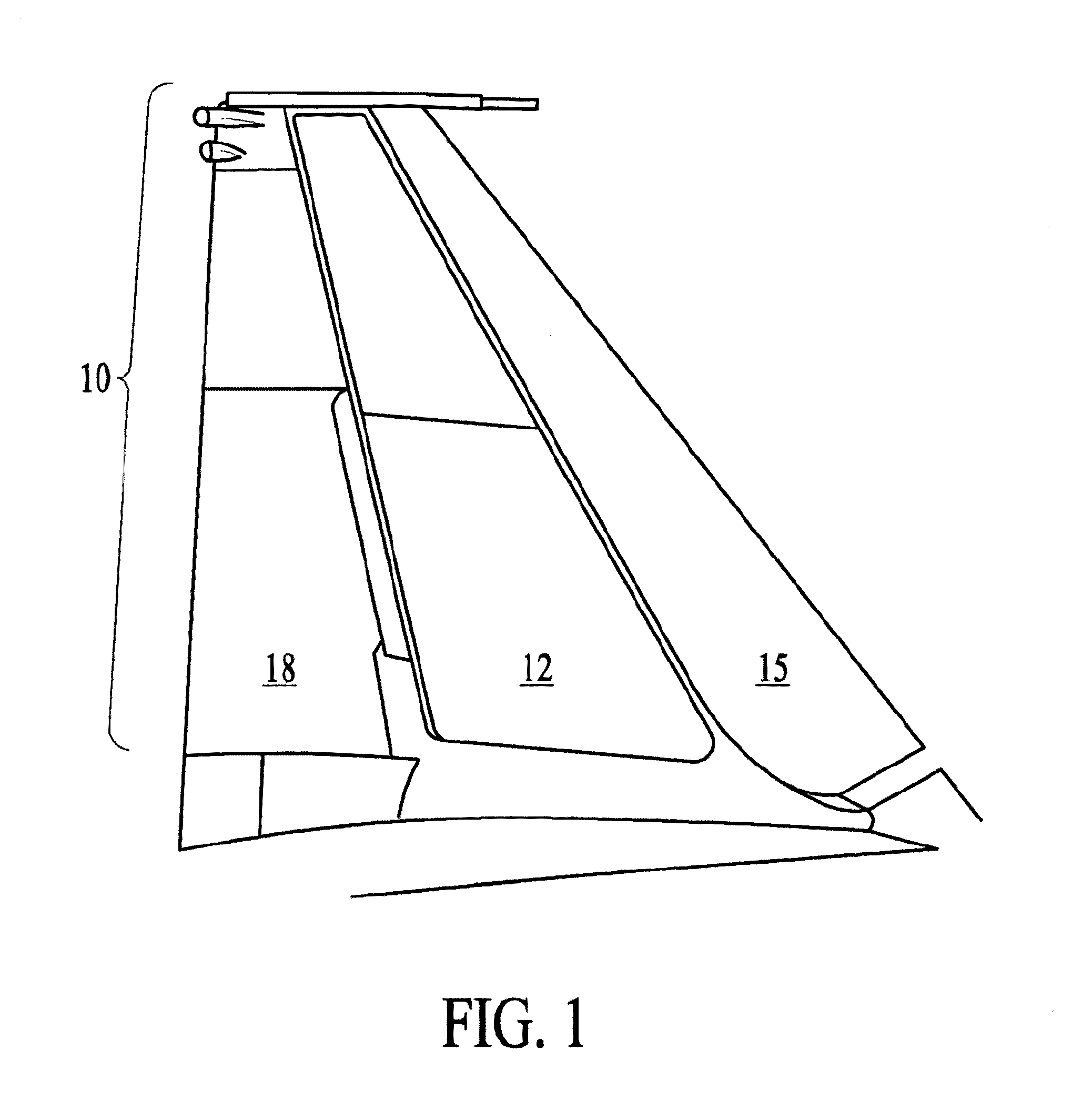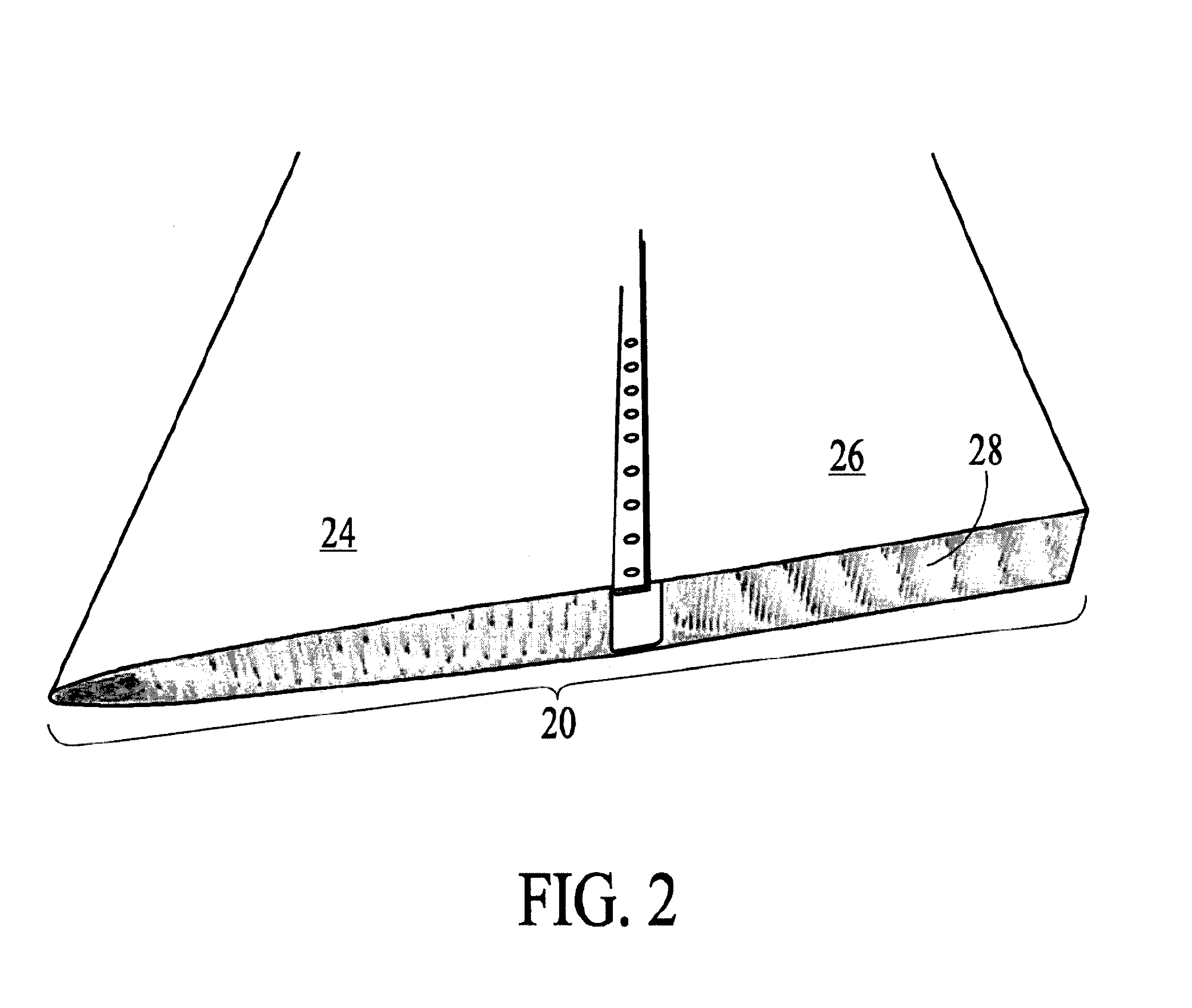Automatic detection of defects in composite structures using ndt methods
a composite structure and automatic detection technology, applied in the field of automatic detection of defects in composite structures using ndt methods, can solve the problems of estimating the type of damage, reducing the detection accuracy, and reducing the cost of the proj
- Summary
- Abstract
- Description
- Claims
- Application Information
AI Technical Summary
Benefits of technology
Problems solved by technology
Method used
Image
Examples
Embodiment Construction
[0081]The method and apparatus of the preferred embodiment of the present invention (IRIS) is illustrated in FIG. 4 as it is applied to inspection of the aluminum honeycomb boron composite structures found in the vertical stabilizer of an F-15 jet aircraft like the one shown in FIG. 2. FIG. 5 illustrates an alternative embodiment, a handheld version of the system (i.e., referred to handheld IRIS), which was shown in FIG. 4 and being used in an inspection in FIG. 3. In this case, neither the IR camera nor the conductive heating mat is attached to the frame. The main purpose of the frame is to make it easier to position and orient the camera with respect to the composite surface. This positioning and orientation is now done using photogrammetry methods using the reference fiducials on the IR Ruler, which must be present in the IR images actually used for the NDT inspection. The IR ruler may be larger and more complicated when inspecting larger composite structures. Since the IR camera...
PUM
 Login to View More
Login to View More Abstract
Description
Claims
Application Information
 Login to View More
Login to View More - R&D
- Intellectual Property
- Life Sciences
- Materials
- Tech Scout
- Unparalleled Data Quality
- Higher Quality Content
- 60% Fewer Hallucinations
Browse by: Latest US Patents, China's latest patents, Technical Efficacy Thesaurus, Application Domain, Technology Topic, Popular Technical Reports.
© 2025 PatSnap. All rights reserved.Legal|Privacy policy|Modern Slavery Act Transparency Statement|Sitemap|About US| Contact US: help@patsnap.com



